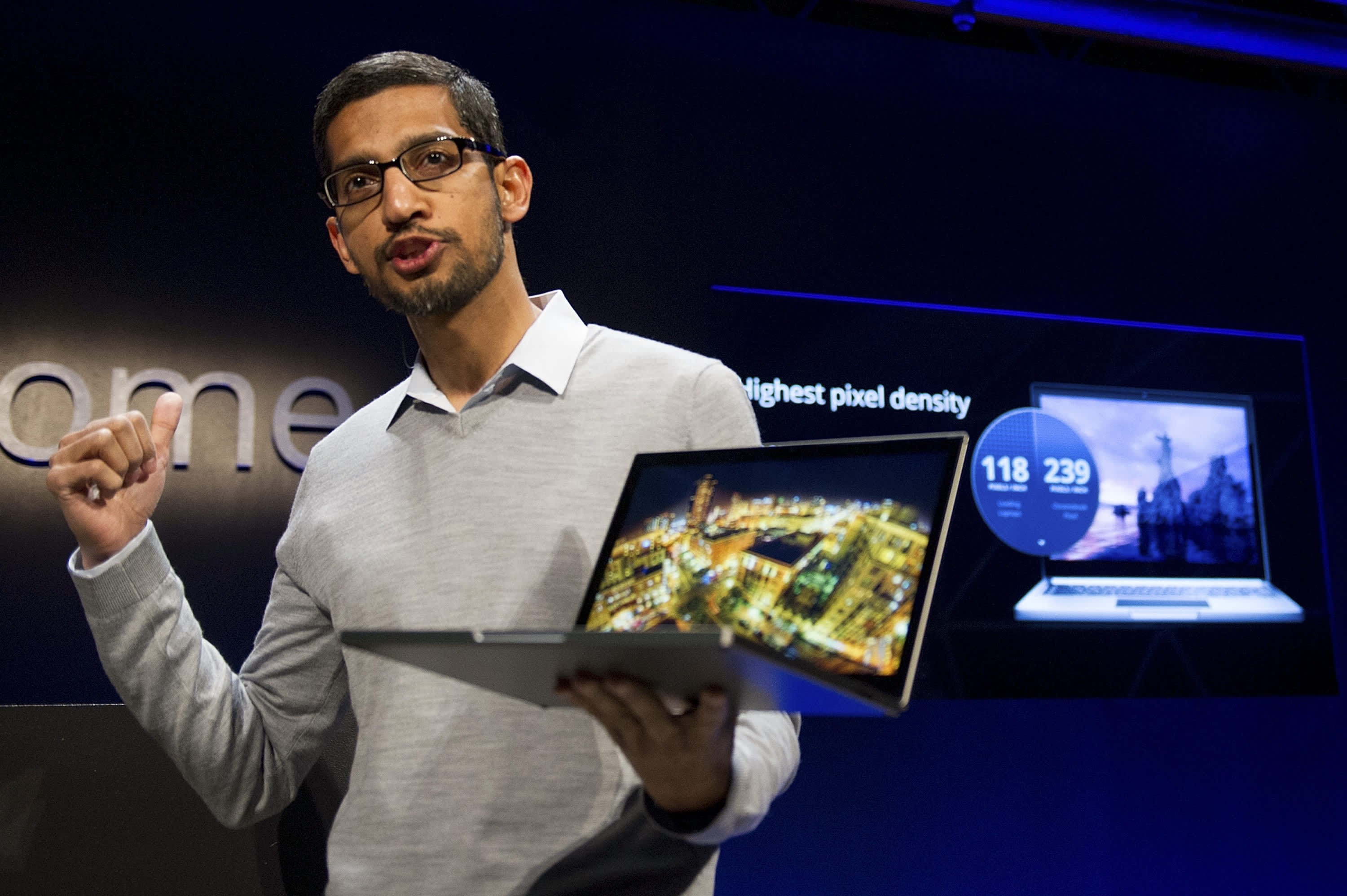Sundar Pichai, senior vice president for Chrome at Google Inc., holds up a new Chromebook Pixel as he speaks during a launch event in San Francisco, California, U.S., on Thursday, Feb. 21, 2013. Google Inc., owner of the world’s most popular search engine, debuted a touchscreen version of the Chromebook laptop, stepping up its challenge to Microsoft Corp. and Apple Inc. in hardware.
David Paul Morris | Bloomberg | Getty Images
The coronavirus pandemic, which has forced kids across the country to attend school remotely, is helping Chromebooks push into the mainstream.
Chromebook laptops run Google’s Chrome OS operating system. They can be cheaper than Windows computers and are much more affordable than Apple MacBooks. On Chromebooks it’s easy to use Google Classroom, the web-based program that teachers and students count on to organize their work while schools are closed.
Technology research firm IDC estimated that in the third quarter device makers shipped around 9 million notebooks running Chrome OS, up 90% from a year earlier, compared with the 15% growth rate for all PCs. Chromebooks represented 11% of total PC shipments in the quarter.
Microsoft’s Windows remains the dominant PC operating system. The Chromebook wave could cut into Microsoft’s lead if the pandemic leads users to get even more comfortable with Chrome OS and services like Google Docs.
“The typical game plan doesn’t really exist, at least in the recent quarters, because there’s been this gold rush for Chromebooks, so people take what they can get,” said Jitesh Ubrani, a research manager at IDC.
Chromebooks have been available since 2011. Acer, HP and Lenovo make some of the most popular devices, and Google has sold Google-branded Chromebooks since 2013.
Some schools purchased Chromebooks for students and promoted pickup events on social media.
Parents have also bought Chromebooks for their children.
Corey Richardson, head of research and strategy at advertising agency Fluent360 in Chicago, bought a refurbished Lenovo computer on Amazon for about $200 for his 8-year-old daughter Portia, a student at the private Daystar Academy. He wanted something practical and easy to use.
“It’s been a great investment,” he said. “I feel like if we need to replace it after the school year we would have gotten all the utility we needed out of it. If it lasts another school year or two, that’s great.”
Richardson said his daughter decorated the laptop with stickers and, in addition to school work, uses it to talk with friends on Facebook’s Messenger Kids app and to watch YouTube videos.
Dave Allen Grady, a senior pastor at Christ United Methodist Church outside Atlanta, said he paid $400 or $500 for a new HP Chromebook from Best Buy for his 11-year-old daughter Joy. She had been given one by her school, Henderson Middle School, but Grady said they returned it so “a kid whose parents couldn’t afford one could have one.”
One way Joy uses the computer is for orchestra class — she plays viola. The students can’t all play together in person, so Joy plays while the teacher watches and listens on the other end of a video call.
Chromebooks are also getting traction in the corporate world, where some large companies have purchased them for employees. This week Parallels announced the release of software that enables Chromebook users to access Windows, which can give office workers a way to access custom work applications.
“We have seen a massive increase in demand for Chromebooks,” Google CEO Sundar Pichai told analysts on the company’s first-quarter earnings call in April.
Consumers are starting to pay a little bit more for Chromebooks as they opt for models with touchscreens and higher performance. Ubrani said the average selling price of a Chromebook in the second quarter was $320, up from below $300 in the second quarter of 2018.
“It’s a slow climb,” he said. “But it is still a climb when we’re talking about low price bands.”
WATCH: Chromebooks meant for US students caught up in the China trade war

